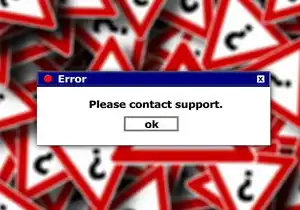The infamous "500 - Internal Server Error" message is a common sight for many web developers and users alike. This error, often accompanied by the cryptic "php", can be a source of frustration and confusion. In this article, we will delve into the depths of this error, exploring its causes, potential solutions, and the broader implications it holds within the realm of web development.
Understanding the 500 - Internal Server Error
At its core, the 500 - Internal Server Error signifies that an unexpected condition has occurred on the server, preventing it from fulfilling the request made by the client. When this error is coupled with "php," it suggests that the issue lies within the PHP scripting language or its execution environment.

图片来源于网络,如有侵权联系删除
Common Causes:
- PHP Errors: Misconfigurations in PHP settings, such as incorrect file permissions, faulty code, or incompatible extensions, can lead to this error.
- Server Overload: Excessive traffic or resource consumption can overwhelm the server, causing it to crash and generate this error.
- Corrupted Files: Damaged or incomplete files, including PHP scripts or configuration files, may trigger this error.
- Incompatible Software Versions: Using outdated or incompatible versions of PHP, Apache, or other related software can result in errors like these.
- Security Measures: Certain security measures, such as firewalls or intrusion detection systems, might block legitimate requests, leading to this error.
Diagnosing the Issue
To effectively address the 500 - Internal Server Error, a systematic approach is necessary. Here are some steps to help diagnose and resolve the problem:
-
Check Server Logs:
Access your server's logs to identify specific error messages or stack traces. These logs can provide valuable insights into what went wrong.
-
Review PHP Code:
- Manually inspect your PHP scripts for any syntax errors, undefined variables, or deprecated functions. Tools like
php -lcan quickly check for syntax errors in PHP files.
- Manually inspect your PHP scripts for any syntax errors, undefined variables, or deprecated functions. Tools like
-
Examine File Permissions:
Ensure that all PHP-related directories and files have the correct permissions. Incorrect permissions can prevent PHP from executing scripts properly.
-
Update Software:
Keep all server components, including PHP, Apache, and MySQL, up-to-date. Outdated software can introduce vulnerabilities and compatibility issues.
-
Test with Minimal Configuration:
Temporarily disable plugins, themes, or custom modifications to isolate the problematic element. This step helps determine if a specific modification is causing the error.
-
Consult Documentation and Forums:
Refer to official documentation and community forums for similar issues. Other developers may have encountered and resolved similar problems.
Preventive Measures
While resolving existing errors is crucial, implementing preventive measures can significantly reduce the likelihood of encountering a 500 - Internal Server Error:
-
Regular Updates:
Maintain regular updates for all server software, ensuring you have the latest bug fixes and security patches.
-
Backup Regularly:
Create backups of your website and database regularly. This precautionary measure allows for quick recovery in case of data loss or corruption.

图片来源于网络,如有侵权联系删除
-
Monitor Server Performance:
Utilize monitoring tools to keep track of server performance metrics, such as CPU usage, memory allocation, and disk space. Early detection of resource bottlenecks can prevent crashes.
-
Implement Proper Error Handling:
Use try-catch blocks in PHP to handle exceptions gracefully. This practice not only improves user experience but also aids in debugging.
-
Optimize Code:
Write clean, efficient code that minimizes resource consumption. Avoid unnecessary loops, heavy computations, and large data transfers.
-
Secure Your Server:
Implement robust security measures, including firewalls, SSL certificates, and regular security audits, to protect against unauthorized access and attacks.
Advanced Troubleshooting Techniques
For more complex cases, consider the following advanced troubleshooting techniques:
-
Use Debugging Tools:
Employ debugging tools like Xdebug or PHPStorm to gain deeper insights into the execution flow and pinpoint exact locations where errors occur.
-
Isolate Environment Variables:
Test different environment variables to see how they affect PHP behavior. For instance, toggling between development and production environments can reveal discrepancies.
-
Consult Professional Support:
If the issue persists, consider seeking assistance from professional support services or engaging with experienced developers who specialize in PHP and server management.
Conclusion
The 500 - Internal Server Error, particularly when associated with PHP, can be a challenging hurdle for web developers. However, by understanding its root causes, systematically diagnosing the issue, and implementing preventive measures, one can minimize occurrences and efficiently manage them when they arise. Embracing proactive strategies and leveraging advanced troubleshooting techniques can transform what seems like an insurmountable obstacle into a manageable challenge, ultimately
标签: #500 - 内部服务器错误 php



评论列表